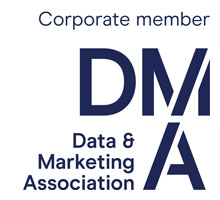Address information for marketing and geodemographics
A case for the National Address Gazetteer to be open data
In December 2010 the government announced proposals to create a definitive National Address Gazetteer (NAG) for England and Wales, and to set up a joint venture – GeoPlace – between Ordnance Survey and the Local Government Group to do this.
NAG was welcome in principle as a single and definitive source of address information in circumstances of uncertainty over the future of the Postcode Address File (PAF), currently used as the source of address information in the vast majority of marketing and geodemographic applications, and of the high cost of alternatives.
However, the good news of the gazetteer was immediately tempered by the fact that a hybrid access regime was proposed where products were free to the public sector under the Public Sector Mapping Agreement (PSMA) but charged to others.
Indications from Ordnance Survey, who will be marketing NAG, are that terms and charges for NAG products will follow those for their current addressing products – if so, commercial use of NAG would be discouraged. Annual licences would be costly and there could be no flexibility to cater for selective use of the data or start-up applications in the information economy. A large proportion of potential private sector customers would be excluded from the benefits of NAG by an approach to access which does not recognise the way data will be used by business over coming years, and which is incompatible with the government’s economic objectives for PSI.
The MRS Census and Geodemographics Group (CGG) view is that this arrangement would not realize the full return to the economy from the investment in NAG, and that there is a strong case for elements of NAG to be open data, free at the point of use to all sectors. This is a view supported by a background of wider government developments, as yet at a formative stage, to make more public sector information accessible as ‘open data’. The CGG case is outlined below.
Getting a better deal from a national asset
The CGG sees a simple parallel with the population Census prior to 2001, and prior to the Census Access project, which delivered the results free at the point of use to all sectors. Public sector information – with NAG as currently proposed as a prime example – are national assets funded by taxpayers. Putting constraints on access restricts full realization of the value of the investment to the economy, where only marginal additional expenditure would be required for the full value to be realized.
The proposal for NAG as open data is in terms of what is wanted and what is to be avoided, anticipating possible issues and suggesting solutions for them.
Why should elements of NAG be open data?
In general terms, for all potential users outside the PSMA, an open NAG would stimulate more efficient, less wasteful, more consistent use of address information, almost entirely with economic benefit as a national, public asset. There would also be increased transparency of the data assembled in NAG, which would assist public acceptability and would give scope for the public to make corrections and improve the quality of the gazetteer. The costs, significantly, could be modest as the bulk of the cost of NAG are met under the PSMA, and thus open data would be a marginal additional cost, affordable in relation to benefits.
How would research and marketing use NAG open data?
An open NAG would facilitate business by removing costs of deficient address information and by providing the benefits of definitive data in key areas of research and marketing such as: robust sampling frames for all types of market, opinion and social research; accurate address data for customer and prospect databases; efficient on-line services and on-ground delivery; precise and effective market analysis; and data sharing in cross-sector contracts.
An open NAG would also be one of the foundations for 'beyond 2011' estimates of the numbers and characteristics of local populations currently sourced from the Census and used widely in marketing and research.
What elements of NAG need to be open, particularly for research and marketing?
At the core the need is for UK wide addresses – sub UK coverage would be second best – with relevant attributes (residential, business, mixed, multi occupier, etc.) for all addresses, together with postcodes and National Grid coordinate references at one metre resolution for all addresses.
The most frequent updates possible are required, but ‘physical’ detail needed to run local services is not essential, nor are any data which might be included in NAG primarily for cartographic purposes.
What should be avoided?
The priority is to avoid the inefficiencies and costs of a two-tier public/private sector service and limitations on the movement of data, particularly where work is done under contract for the public sector. Inconsistencies between sectors could arise if NAG products were cut down or updated less frequently for affordability, and, without open access, there would inevitably have to be licensing constraints on the movement of data and possibly derived products – an avoidable bureaucratic cost and a deterrent to the full use of a national asset.
Potential issues and solutions:
CGG sees none of the potential issues over an open NAG to be ‘show stoppers’ if identified and dealt with at an early stage.
Would NAG be within the scope of the current OS Open Data service?
Ordnance Survey already makes some products such as Code Point Open available free under its Open Data service, and its range could be conveniently extended to cover NAG. However, there might be some issues over whether the GeoPlace joint venture is able to contribute products to OS Open Data. Nevertheless, the openness of the data is critical, and somewhat less so where it resides.
Offsetting the costs of NAG?
An intention to offset the costs of NAG through income from a non-PSMA market could diminish the argument that opening the data would only have a marginal cost as the lost income would have to be found from elsewhere. It could be argued, however, that in any circumstances the non-PSMA market would be small if licence charges remained high and without a radical approach on access to NAG.
The postcode element:
NAG is to include postcodes, which under a short term agreement are to be free to the PSMA users in certain circumstances; otherwise GeoPlace would act merely as a Value Added Reseller (VAR) for PAF products. For the future, the main driver for the resolution of uncertainty over PAF will be the privatisation of large parts of Royal Mail, together with recognition of the very wide use of postcodes in the information economy. An option would be to make elements of PAF, but not necessarily PAF as such, available as open data, including access via NAG, and possibly to move the Address Management Unit away from Royal Mail and for all work on addresses to be done in one place, with taxpayer funding if justified by the value to the information economy.
Licenses:
An open NAG as government data would be very likely to be licensed to protect rights and possibly, to permit only what was defined as acceptable use. It would be important for users to be involved to ensure that legitimate applications in research and marketing were not unnecessarily constrained.
Get the latest MRS news
Our newsletters cover the latest MRS events, policy updates and research news.










